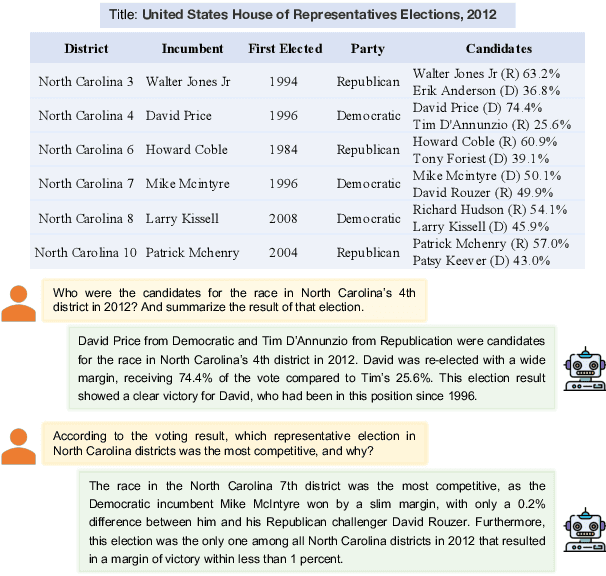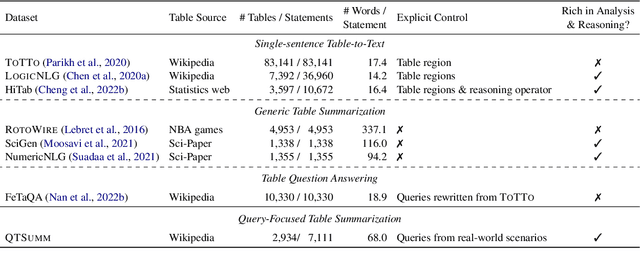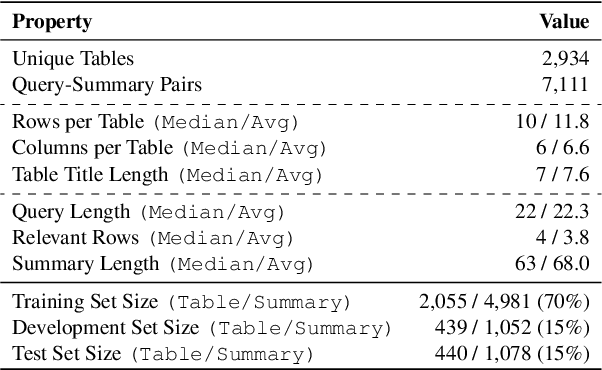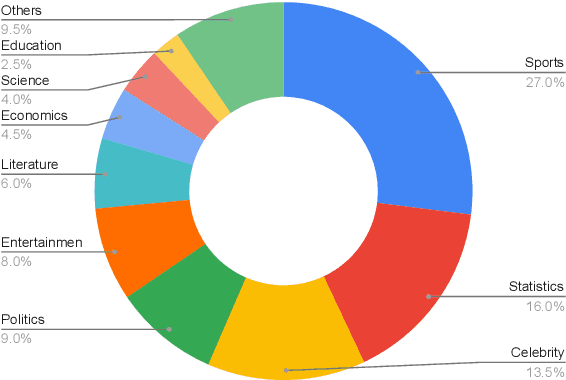Simeng Han
Meta-Reasoner: Dynamic Guidance for Optimized Inference-time Reasoning in Large Language Models
Feb 27, 2025Abstract:Large Language Models (LLMs) increasingly rely on prolonged reasoning chains to solve complex tasks. However, this trial-and-error approach often leads to high computational overhead and error propagation, where early mistakes can derail subsequent steps. To address these issues, we introduce Meta-Reasoner, a framework that dynamically optimizes inference-time reasoning by enabling LLMs to "think about how to think." Drawing inspiration from human meta-cognition and dual-process theory, Meta-Reasoner operates as a strategic advisor, decoupling high-level guidance from step-by-step generation. It employs "contextual multi-armed bandits" to iteratively evaluate reasoning progress, and select optimal strategies (e.g., backtrack, clarify ambiguity, restart from scratch, or propose alternative approaches), and reallocates computational resources toward the most promising paths. Our evaluations on mathematical reasoning and puzzles highlight the potential of dynamic reasoning chains to overcome inherent challenges in the LLM reasoning process and also show promise in broader applications, offering a scalable and adaptable solution for reasoning-intensive tasks.
ATEB: Evaluating and Improving Advanced NLP Tasks for Text Embedding Models
Feb 24, 2025Abstract:Traditional text embedding benchmarks primarily evaluate embedding models' capabilities to capture semantic similarity. However, more advanced NLP tasks require a deeper understanding of text, such as safety and factuality. These tasks demand an ability to comprehend and process complex information, often involving the handling of sensitive content, or the verification of factual statements against reliable sources. We introduce a new benchmark designed to assess and highlight the limitations of embedding models trained on existing information retrieval data mixtures on advanced capabilities, which include factuality, safety, instruction following, reasoning and document-level understanding. This benchmark includes a diverse set of tasks that simulate real-world scenarios where these capabilities are critical and leads to identification of the gaps of the currently advanced embedding models. Furthermore, we propose a novel method that reformulates these various tasks as retrieval tasks. By framing tasks like safety or factuality classification as retrieval problems, we leverage the strengths of retrieval models in capturing semantic relationships while also pushing them to develop a deeper understanding of context and content. Using this approach with single-task fine-tuning, we achieved performance gains of 8\% on factuality classification and 13\% on safety classification. Our code and data will be publicly available.
P-FOLIO: Evaluating and Improving Logical Reasoning with Abundant Human-Written Reasoning Chains
Oct 11, 2024



Abstract:Existing methods on understanding the capabilities of LLMs in logical reasoning rely on binary entailment classification or synthetically derived rationales, which are not sufficient for proper investigation of model's capabilities. We present P-FOLIO, a human-annotated dataset consisting of diverse and complex reasoning chains for a set of realistic logical reasoning stories also written by humans. P-FOLIO is collected with an annotation protocol that facilitates humans to annotate well-structured natural language proofs for first-order logic reasoning problems in a step-by-step manner. The number of reasoning steps in P-FOLIO span from 0 to 20. We further use P-FOLIO to evaluate and improve large-language-model (LLM) reasoning capabilities. We evaluate LLM reasoning capabilities at a fine granularity via single-step inference rule classification, with more diverse inference rules of more diverse and higher levels of complexities than previous works. Given that a single model-generated reasoning chain could take a completely different path than the human-annotated one, we sample multiple reasoning chains from a model and use pass@k metrics for evaluating the quality of model-generated reasoning chains. We show that human-written reasoning chains significantly boost the logical reasoning capabilities of LLMs via many-shot prompting and fine-tuning. Furthermore, fine-tuning Llama3-7B on P-FOLIO improves the model performance by 10% or more on three other out-of-domain logical reasoning datasets. We also conduct detailed analysis to show where most powerful LLMs fall short in reasoning. We will release the dataset and code publicly.
GraphIC: A Graph-Based In-Context Example Retrieval Model for Multi-Step Reasoning
Oct 03, 2024



Abstract:In-context learning (ICL) enables large language models (LLMs) to generalize to new tasks by incorporating a few in-context examples (ICEs) directly in the input, without updating parameters. However, the effectiveness of ICL heavily relies on the selection of ICEs, and conventional text-based embedding methods are often inadequate for tasks that require multi-step reasoning, such as mathematical and logical problem solving. This is due to the bias introduced by shallow semantic similarities that fail to capture the deeper reasoning structures required for these tasks. We present GraphIC, a novel approach that leverages graph-based representations of reasoning processes, coupled with Bayesian Networks (BNs) to select ICEs. Graph structures inherently filter out shallow semantics while preserving the core reasoning structure. Importantly, BNs capture the dependency of a node's attributes on its parent nodes, closely mirroring the hierarchical nature of human cognition-where each thought is shaped by preceding ones. This makes BNs particularly well-suited for multi-step reasoning tasks, aligning the process more closely with human-like reasoning. Extensive experiments across three types of reasoning tasks (mathematical reasoning, code generation, and logical reasoning) demonstrate that GraphIC outperforms both training-free and training-based models in selecting ICEs, excelling in terms of both effectiveness and efficiency. We show that GraphIC enhances ICL's performance and interoperability, significantly advancing ICE selection for multi-step reasoning tasks.
MetaMath: Integrating Natural Language and Code for Enhanced Mathematical Reasoning in Large Language Models
Sep 28, 2024Abstract:Large Language Models (LLMs) are commonly used to generate solutions for mathematical reasoning problems in the following formats: natural language, code, or a combination of both. In this paper, we explore fundamental questions related to solving mathematical reasoning problems using natural language and code with state-of-the-art LLMs, including GPT-4o-mini and LLama-3.1-8b-Turbo. Our findings show that LLMs are better at reasoning in natural language compared to code. Additionally, although natural language and code serve as complementary forms of reasoning, they can affect each other in a negative way in certain scenarios. These insights motivate our development of a new prompting method, MetaMath, which leverages an LLM to dynamically select the most appropriate reasoning form, resulting in improved performance over comparable baselines with GPT-4o-mini.
Optimizing Language Model's Reasoning Abilities with Weak Supervision
May 07, 2024



Abstract:While Large Language Models (LLMs) have demonstrated proficiency in handling complex queries, much of the past work has depended on extensively annotated datasets by human experts. However, this reliance on fully-supervised annotations poses scalability challenges, particularly as models and data requirements grow. To mitigate this, we explore the potential of enhancing LLMs' reasoning abilities with minimal human supervision. In this work, we introduce self-reinforcement, which begins with Supervised Fine-Tuning (SFT) of the model using a small collection of annotated questions. Then it iteratively improves LLMs by learning from the differences in responses from the SFT and unfinetuned models on unlabeled questions. Our approach provides an efficient approach without relying heavily on extensive human-annotated explanations. However, current reasoning benchmarks typically only include golden-reference answers or rationales. Therefore, we present \textsc{PuzzleBen}, a weakly supervised benchmark that comprises 25,147 complex questions, answers, and human-generated rationales across various domains, such as brainteasers, puzzles, riddles, parajumbles, and critical reasoning tasks. A unique aspect of our dataset is the inclusion of 10,000 unannotated questions, enabling us to explore utilizing fewer supersized data to boost LLMs' inference capabilities. Our experiments underscore the significance of \textsc{PuzzleBen}, as well as the effectiveness of our methodology as a promising direction in future endeavors. Our dataset and code will be published soon on \texttt{Anonymity Link}.
Benchmarking Generation and Evaluation Capabilities of Large Language Models for Instruction Controllable Summarization
Nov 15, 2023Abstract:While large language models (LLMs) already achieve strong performance on standard generic summarization benchmarks, their performance on more complex summarization task settings is less studied. Therefore, we benchmark LLMs on instruction controllable text summarization, where the model input consists of both a source article and a natural language requirement for the desired summary characteristics. To this end, we curate an evaluation-only dataset for this task setting and conduct human evaluation on 5 LLM-based summarization systems. We then benchmark LLM-based automatic evaluation for this task with 4 different evaluation protocols and 11 LLMs, resulting in 40 evaluation methods in total. Our study reveals that instruction controllable text summarization remains a challenging task for LLMs, since (1) all LLMs evaluated still make factual and other types of errors in their summaries; (2) all LLM-based evaluation methods cannot achieve a strong alignment with human annotators when judging the quality of candidate summaries; (3) different LLMs show large performance gaps in summary generation and evaluation. We make our collected benchmark, InstruSum, publicly available to facilitate future research in this direction.
Eliminating Reasoning via Inferring with Planning: A New Framework to Guide LLMs' Non-linear Thinking
Oct 18, 2023Abstract:Chain-of-Thought(CoT) prompting and its variants explore equipping large language models (LLMs) with high-level reasoning abilities by emulating human-like linear cognition and logic. However, the human mind is complicated and mixed with both linear and nonlinear thinking. In this work, we propose \textbf{I}nferential \textbf{E}xclusion \textbf{P}rompting (IEP), a novel prompting that combines the principles of elimination and inference in order to guide LLMs to think non-linearly. IEP guides LLMs to plan and then utilize Natural Language Inference (NLI) to deduce each possible solution's entailment relation with context, commonsense, or facts, therefore yielding a broader perspective by thinking back for inferring. This forward planning and backward eliminating process allows IEP to better simulate the complex human thinking processes compared to other CoT-based methods, which only reflect linear cognitive processes. We conducted a series of empirical studies and have corroborated that IEP consistently outperforms CoT across various tasks. Additionally, we observe that integrating IEP and CoT further improves the LLMs' performance on certain tasks, highlighting the necessity of equipping LLMs with mixed logic processes. Moreover, to better evaluate comprehensive features inherent in human logic, we introduce \textbf{M}ental-\textbf{A}bility \textbf{R}easoning \textbf{B}enchmark (MARB). The benchmark comprises six novel subtasks with a total of 9,115 questions, among which 1,685 are developed with hand-crafted rationale references. We believe both \textsc{IEP} and \textsc{MARB} can serve as a promising direction for unveiling LLMs' logic and verbal reasoning abilities and drive further advancements. \textsc{MARB} will be available at ~\texttt{anonymity link} soon.
QTSumm: A New Benchmark for Query-Focused Table Summarization
May 23, 2023



Abstract:People primarily consult tables to conduct data analysis or answer specific questions. Text generation systems that can provide accurate table summaries tailored to users' information needs can facilitate more efficient access to relevant data insights. However, existing table-to-text generation studies primarily focus on converting tabular data into coherent statements, rather than addressing information-seeking purposes. In this paper, we define a new query-focused table summarization task, where text generation models have to perform human-like reasoning and analysis over the given table to generate a tailored summary, and we introduce a new benchmark named QTSumm for this task. QTSumm consists of 5,625 human-annotated query-summary pairs over 2,437 tables on diverse topics. Moreover, we investigate state-of-the-art models (i.e., text generation, table-to-text generation, and large language models) on the QTSumm dataset. Experimental results and manual analysis reveal that our benchmark presents significant challenges in table-to-text generation for future research.
Revisiting the Gold Standard: Grounding Summarization Evaluation with Robust Human Evaluation
Dec 15, 2022Abstract:Human evaluation is the foundation upon which the evaluation of both summarization systems and automatic metrics rests. However, existing human evaluation protocols and benchmarks for summarization either exhibit low inter-annotator agreement or lack the scale needed to draw statistically significant conclusions, and an in-depth analysis of human evaluation is lacking. In this work, we address the shortcomings of existing summarization evaluation along the following axes: 1) We propose a modified summarization salience protocol, Atomic Content Units (ACUs), which relies on fine-grained semantic units and allows for high inter-annotator agreement. 2) We curate the Robust Summarization Evaluation (RoSE) benchmark, a large human evaluation dataset consisting of over 22k summary-level annotations over state-of-the-art systems on three datasets. 3) We compare our ACU protocol with three other human evaluation protocols, underscoring potential confounding factors in evaluation setups. 4) We evaluate existing automatic metrics using the collected human annotations across evaluation protocols and demonstrate how our benchmark leads to more statistically stable and significant results. Furthermore, our findings have important implications for evaluating large language models (LLMs), as we show that LLMs adjusted by human feedback (e.g., GPT-3.5) may overfit unconstrained human evaluation, which is affected by the annotators' prior, input-agnostic preferences, calling for more robust, targeted evaluation methods.
 Add to Chrome
Add to Chrome Add to Firefox
Add to Firefox Add to Edge
Add to Edge